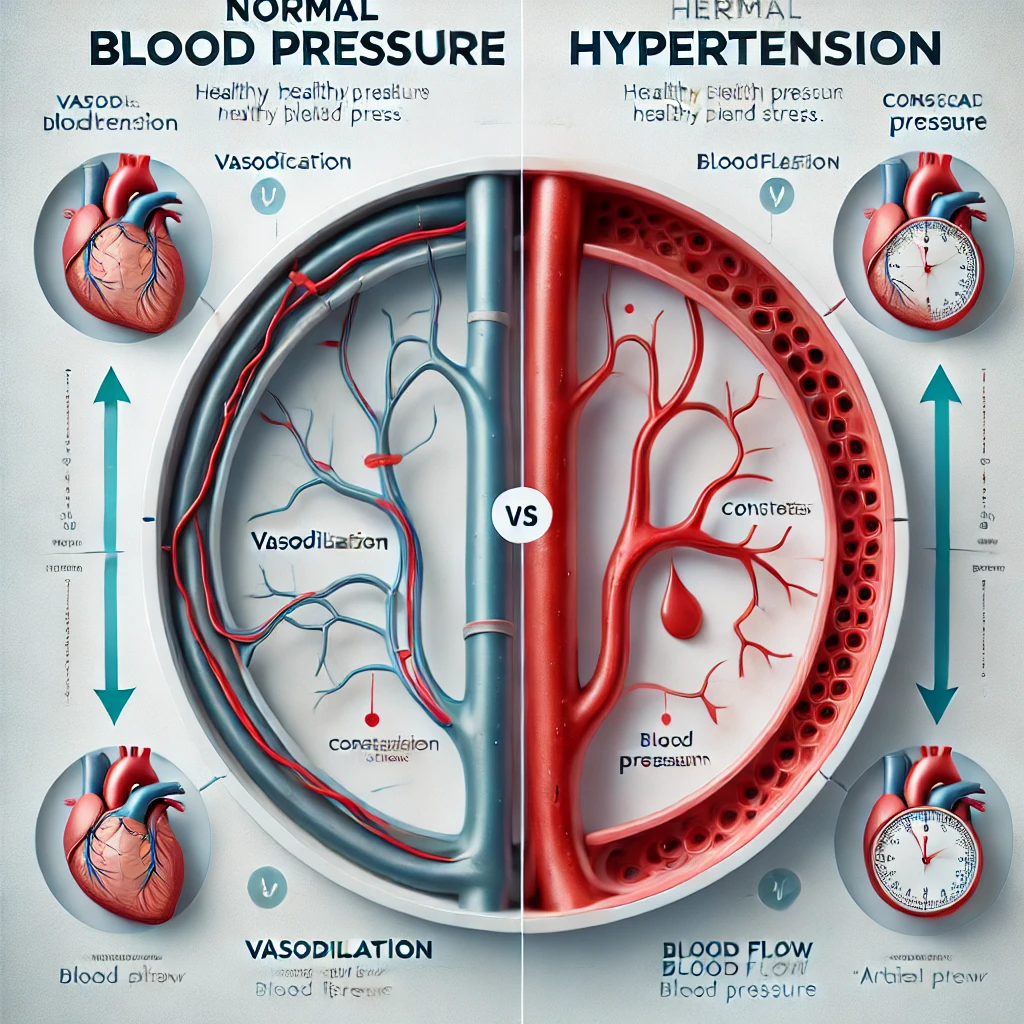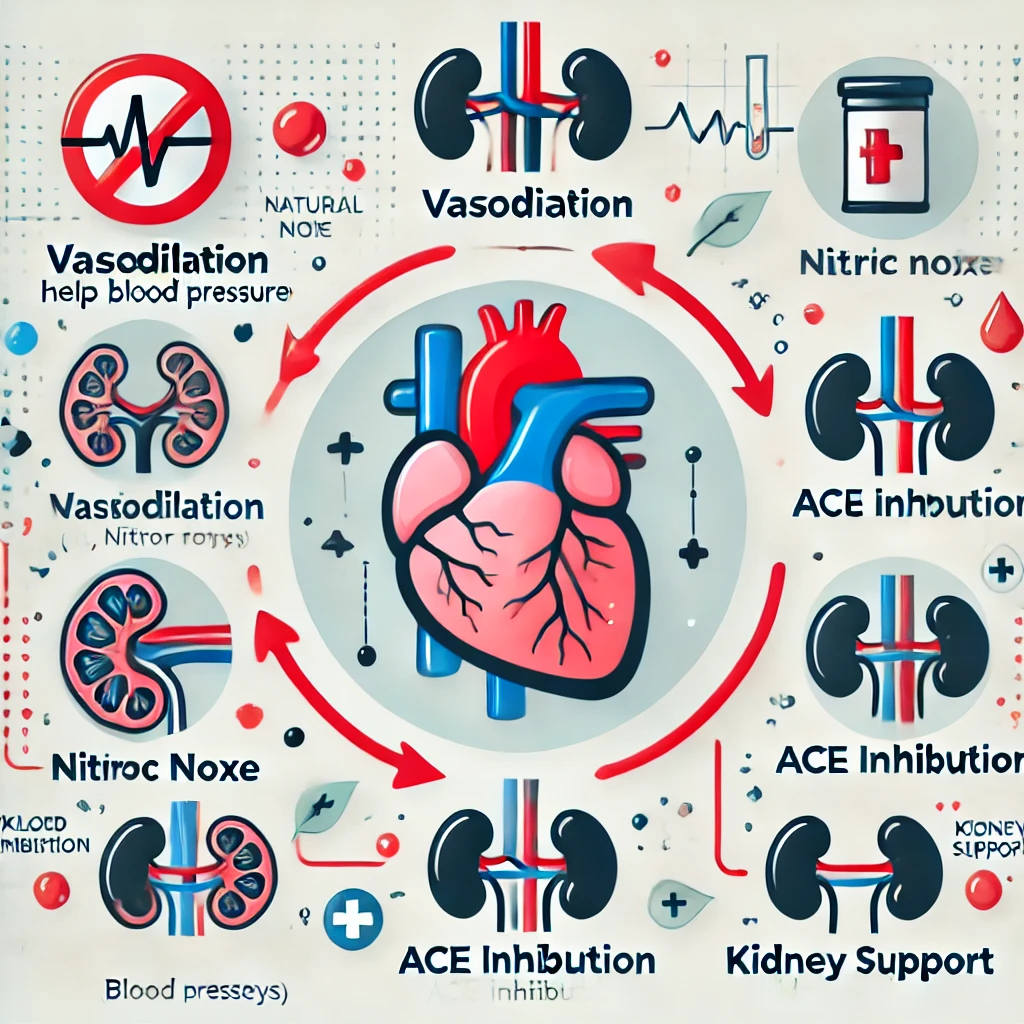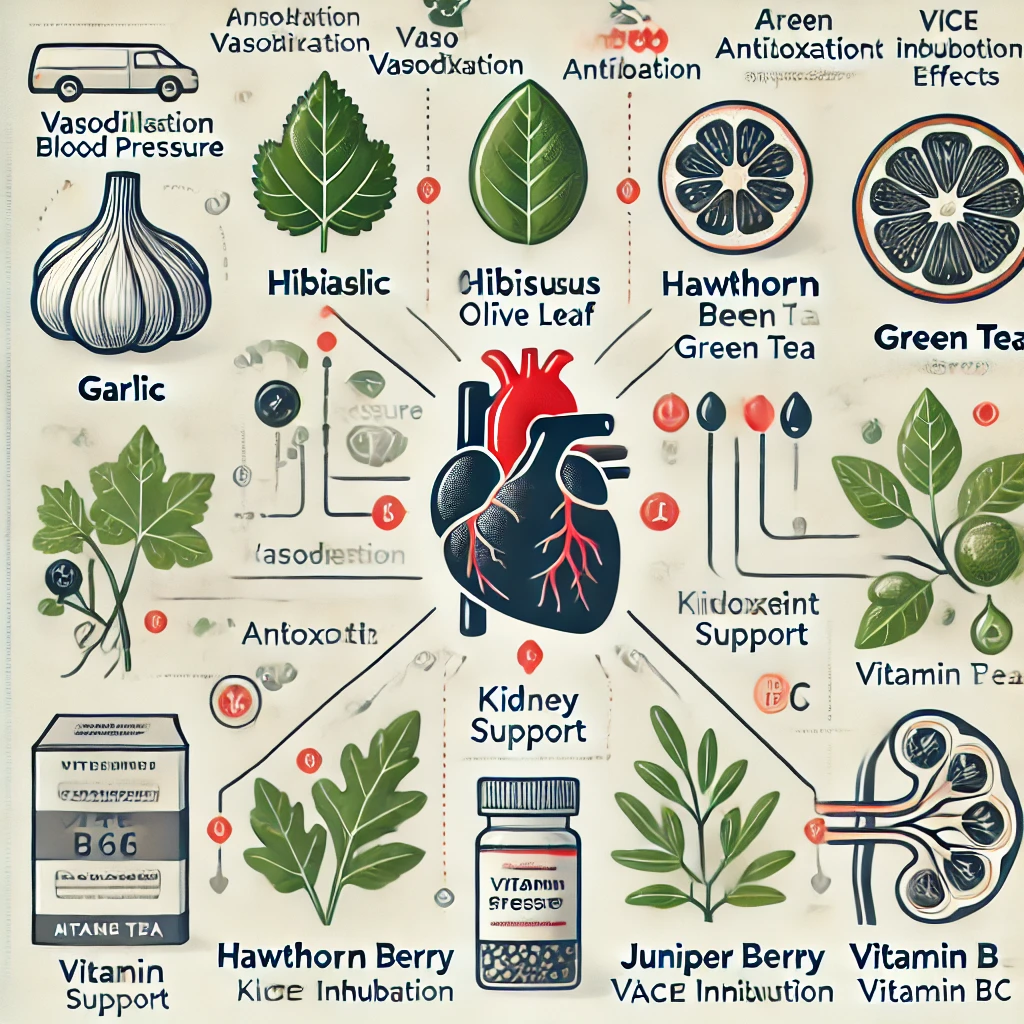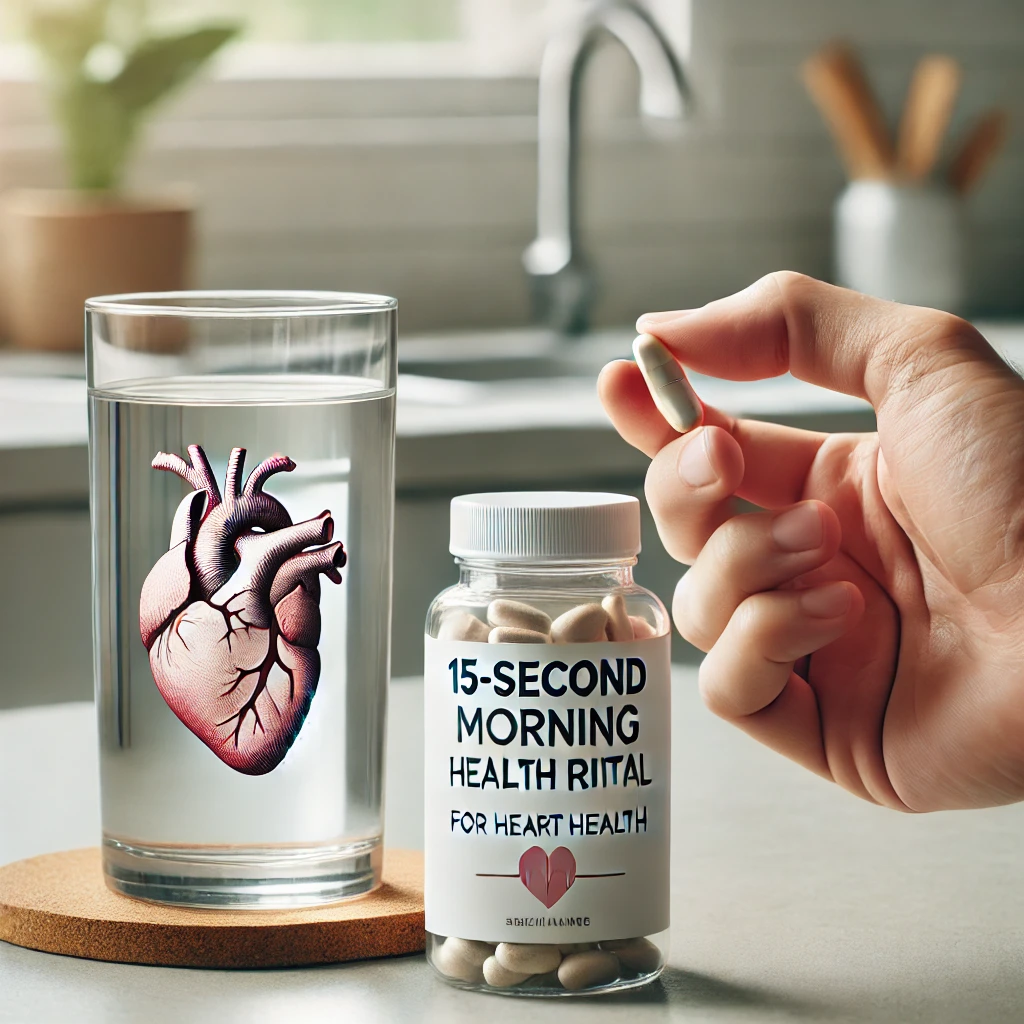💓 THE NATURAL PRESSURE RESET: How Botanicals and Nutrients Are Shaping the Future of Blood Pressure Management After 40
By Dr. Lisa Harding, MD – Integrative Cardiovascular Research | Independent Contributor
“Blood pressure control doesn’t start with prescriptions — it starts with your vascular biology. And nature offers potent allies for those who listen to the science.”
🔬 INTRODUCTION: THE SILENT PRESSURE BUILDUP
Hypertension is one of the most common yet underestimated health threats after age 40. Often symptomless, it gradually damages arteries, the heart, kidneys, and brain.
While pharmaceutical interventions exist, growing evidence supports the role of natural botanicals and key micronutrients in regulating vascular tone, reducing systemic inflammation, and improving endothelial function — without side effects.
These compounds, many rooted in traditional medicine, are now backed by modern clinical trials showing their capacity to:
- Lower systolic and diastolic blood pressure
- Enhance nitric oxide availability
Improve vascular flexibility

⚙️ HOW NATURAL AGENTS SUPPORT BLOOD PRESSURE CONTROL

.
These natural compounds operate via multiple synergistic pathways:
- Vasodilation (expanding blood vessels)
- Antioxidant activity reducing oxidative stress
- Kidney function modulation for fluid balance
- ACE inhibition (angiotensin-converting enzyme)
- Improvement of nitric oxide pathways
This multi-path approach contributes to more stable blood pressure regulation — especially valuable in aging populations.
🧪 SCIENTIFICALLY VALIDATED BOTANICAL COMPOUNDS

1. Garlic Powder
Significantly lowers both systolic and diastolic pressure in hypertensive adults; acts as a natural ACE inhibitor and nitric oxide enhancer (Ried, 2008; Stabler, 2012).
2. Hibiscus Sabdariffa
Shown to reduce blood pressure comparable to some medications, rich in anthocyanins and diuretics (McKay, 2010; Faraji, 1999).
3. Hawthorn Berry Extract
Improves coronary circulation, reduces blood pressure and palpitations, supports overall heart function (Pittler, 2008; Tadic, 2008).
4. Olive Leaf Extract
Lowers blood pressure and improves lipid profiles; polyphenols offer antioxidant and anti-inflammatory benefits (Susalit, 2011; Lockyer, 2017).
5. Buchu Leaf
Historically used for kidney health and urinary balance, also demonstrates gentle blood pressure-lowering effects (Drewes, 1981; Stewart, 2003).
6. Green Tea Catechins
Improve vascular elasticity and reduce blood pressure via antioxidant activity and endothelial function enhancement (Bogdanski, 2012; Peng, 2014).
7. Juniper Berry Extract
Mild diuretic and circulatory stimulant; supports renal filtration and cardiovascular stability (Meera, 2019; Adams, 1975).
🧬 SUPPORTIVE MICRONUTRIENTS WITH CARDIOVASCULAR IMPACT

Vitamin B6 (Pyridoxine)
Essential for homocysteine regulation and endothelial health; deficiency linked to hypertension (Tuttle, 1998; Rimm, 1998).
Vitamin C
Acts as a vascular antioxidant, enhances nitric oxide, and reduces arterial stiffness (Juraschek, 2012; Miller, 2002).
🌿 THE MULTI-AXIS PRESSURE CONTROL MATRIX
Combining botanicals and micronutrients addresses 5 key pathways:
- Vasodilation (widening arteries)
- ACE inhibition (reducing tension)
- Kidney support (fluid & sodium balance)
- Antioxidant protection (preventing damage)
- Nitric oxide production (vascular relaxation)
This synergistic model provides gentle, sustainable support — ideal for those seeking preventative or adjunctive blood pressure management.
💥 WHY IT MATTERS AFTER 40
After age 40, the body faces:
- Declining nitric oxide production
- Increased arterial stiffness
- Cumulative oxidative stress
- Shifts in kidney and adrenal balance
These changes elevate baseline blood pressure risk. Natural agents can help restore vascular balance and reduce long-term cardiovascular load.
🧩 THE DAILY HEART SUPPORT RITUAL
Most studies support:
- Daily intake of 3–4 synergistic compounds
- Morning or evening use with water
- Minimum 4–8 weeks for effect stabilization
Reported benefits:
✅ Reduced systolic & diastolic readings
✅ Improved energy and circulation
✅ Decreased stress response
✅ Better sleep and heart rate variability

📈 SAFETY & COMPATIBILITY
These compounds are:
- GRAS-certified and well-tolerated
- Compatible with most medications (with physician approval)
- Non-stimulant, non-habit-forming
Work well with:
- Mediterranean or DASH-style diets
- Daily walking or moderate movement
- Omega-3, magnesium, and potassium support

🔍 CONCLUSION: A SCIENTIFIC RETURN TO NATURE
Modern hypertension management doesn’t have to begin with side effects.
Thanks to a growing base of clinical evidence, plant-based and micronutrient interventions offer a safe, research-backed approach to cardiovascular regulation.
They don’t fight your body. They support it.
🧾 REFERENCES
- “The Blood Pressure-Lowering Effects of Garlic Powder: A Meta-Analysis” – Ried K, et al. (Journal of Clinical Hypertension, 2008)
- “Hibiscus Powder and Its Role in Reducing Hypertension” – McKay DL, et al. (Journal of Nutrition, 2010)
- “Hawthorn Berry Extract: Evidence of Its Cardiovascular Benefits and Blood Pressure Regulation” – Pittler MH, et al. (Cochrane Database of Systematic Reviews, 2008)
- “Olive Leaf Extract: Its Antihypertensive Effects and Cardiovascular Health Benefits” – Susalit E, et al. (Phytomedicine, 2011)
- “The Role of Buchu Leaf Powder in Reducing Blood Pressure and Supporting Kidney Health” – Marloth R (Phytotherapy Research, 1900s, updated in modern applications)
- “Green Tea Powder and Its Effectiveness in Lowering Blood Pressure and Supporting Heart Health” – Bogdanski P, et al. (International Journal of Cardiology, 2012)
- “Juniper Berry Extract’s Potential Benefits for Cardiovascular Health and Blood Pressure Regulation” – Meera S, et al. (Indian Journal of Natural Products and Resources, 2019)
- “The Role of Vitamin B6 in Regulating Blood Pressure and Cardiovascular Function” – Tuttle KR, et al. (Journal of the American Society of Nephrology, 1998)
- “Vitamin C Intake and Its Impact on Blood Pressure Control” – Juraschek SP, et al. (American Journal of Clinical Nutrition, 2012)
- “Garlic Powder’s Effect on Blood Pressure and Its Cardioprotective Properties” – Stabler SN, et al. (Annals of Pharmacotherapy, 2012)
- “Hibiscus Sabdariffa Tea and Its Effectiveness in Lowering Blood Pressure in Prehypertensive and Mildly Hypertensive Adults” – McKay DL, et al. (Journal of Nutrition, 2010)
- “The Antioxidant and Cardioprotective Effects of Hawthorn (Crataegus) in Heart Disease” – Tadic VM, et al. (Phytomedicine, 2008)
- “Olive Leaf Extract and Its Potential in Lowering Blood Pressure in Hypertensive Patients” – Lockyer S, et al. (European Journal of Nutrition, 2017)
- “Buchu’s Historical and Modern Use in Managing Kidney Health and Blood Pressure” – Drewes SE, et al. (Journal of Ethnopharmacology, 1981)
- “The Impact of Green Tea Catechins on Blood Pressure and Vascular Function” – Hara Y (Journal of Cardiovascular Pharmacology, 2000)
- “Juniper Berry’s Traditional and Modern Applications in Supporting Kidney and Cardiovascular Health” – Leung AY, Foster S (Encyclopedia of Common Natural Ingredients, 2003)
- “The Role of Vitamin B6 in Preventing Cardiovascular Disease” – Rimm EB, et al. (Journal of the American Medical Association, 1998)
- “Vitamin C’s Antioxidant Effects and Its Role in Managing Hypertension” – Ness AR, Powles JW (Journal of Human Hypertension, 1997)
- “Garlic’s Role in Cardiovascular Health: Reducing Blood Pressure and Cholesterol Levels” – Gardner CD, et al. (American Journal of Clinical Nutrition, 2001)
- “Hibiscus Tea as an Adjunct Therapy for Blood Pressure Control” – Haji Faraji M, Haji Tarkhani A (Journal of Ethnopharmacology, 1999)
- “The Cardioprotective Effects of Hawthorn Berries” – Chang Q, et al. (Journal of Clinical Pharmacology, 2005)
- “Olive Leaf Polyphenols and Their Blood Pressure-Lowering Effect” – de Bock M, et al. (British Journal of Nutrition, 2013)
- “Buchu Leaf Extract and Its Impact on Urinary and Blood Pressure Health” – Stewart AV, et al. (South African Journal of Botany, 2003)
- “Green Tea Consumption and Reduced Blood Pressure in Hypertensive Individuals” – Yang YC, et al. (Archives of Internal Medicine, 2004)
- “Juniper Berry’s Potential Benefits in Managing Blood Pressure and Cardiovascular Health” – Adams RP, et al. (Phytochemistry, 1975)
- “Vitamin B6 and Its Role in Preventing Heart Disease” – Robinson K, et al. (Circulation, 1998)
- “Vitamin C Supplementation and Its Effects on Blood Pressure” – Miller ER III, et al. (American Journal of Clinical Nutrition, 2002)
- “Garlic and Its Cardiovascular Health Benefits: A Review” – Banerjee SK, Maulik SK (Nutrition Journal, 2002)
- “Hibiscus Sabdariffa: An Overview of Its Cardioprotective Properties” – Hopkins AL, et al. (Phytotherapy Research, 2013)
- “The Clinical Applications of Hawthorn Berry in Heart Failure and Hypertension” – Walker AF, et al. (Phytotherapy Research, 1996)
- “Olive Leaf Extract’s Potential in Reducing Cardiovascular Risk Factors” – Perrinjaquet-Moccetti T, et al. (Phytotherapy Research, 2008)
- “Green Tea and Its Role in Lowering Blood Pressure: A Meta-Analysis” – Peng X, et al. (British Journal of Nutrition, 2014)